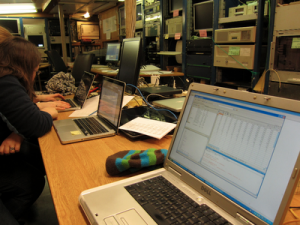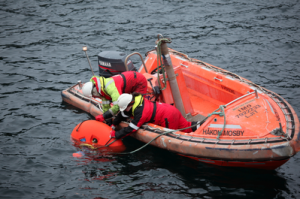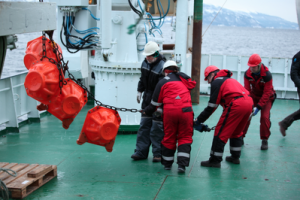What level of proficiency do you need to communicate about science?
This post is not strictly about oceanography, but I started thinking about it in the context of a class I taught recently, where I was teaching in a foreign language to me and most of the students.
After one of the classes, a student came to me to thank me that had I continued explaining concepts, even though some of the (native speaker) students thought that that was ridiculous and everybody should know what certain terms meant (posted about here).
And one thing this student and I noted when discussing in a language that was foreign to both of us was that even though our grammar might be not perfect and our vocabulary not as large as that of native speakers, we had a sensitivity for other speakers that many of the native speakers lacked. For example, we discovered that it comes natural to us to speak about “football” to speakers of British English, when we would say “soccer” to speakers of American English. Or that we are aware that trousers and pants might or might not mean the same thing, depending on who you are talking to. And I remember distinctly how on a British ship, sitting at a table with American scientists, I explained that when the stewart asked if we wanted “pudding” we could well end up getting cake, because in the context then what he meant was “dessert”.
When you are a non-native speaker, you get used to listening very carefully in order to understand what is going on around you. In my first months in Norway, for example, I happily watched Swedish TV and would understand as much there as on Norwegian TV. I would recognize words, grammar rules that had been discussed in language class, even phrases. Yet many of my Norwegian friends say they find it hard to understand Swedish. But on the other hand I remember that I found it much easier to communicate in English when in Vienna than to adapt to their German dialect.
Sports-analogies are another example that is typically very language-dependent. I know by now what “pitching an idea” means, but not because I know pitching from a sports context, but because I have heard that phrase used often enough so it stuck. Same for this teaching assistant who helped with my class who I overheard shouting “mud pit!” when he wanted students to remember something about molecular diffusion (or heat?) – the picture I made up in my head is that of players huddling together in a muddy playing field, but I still don’t know what exactly he was referring to (and I’m sure neither do half of the students of that class).
Now, I am not saying that native speakers of any language are necessarily unaware of those peculiarities. But what I am saying is this: If you are a native speaker, and you are communicating with non-native speakers, try to be aware of how you are communicating your ideas, and be sensitive to whether you are understood. And listen carefully to what your students are saying and don’t just assume that non-native speakers can’t possibly have anything interesting to say. And if you are the teacher who taught the class before I taught the class with the student mentioned above, and you told them that their English was not good enough because they didn’t speak (note: not because they didn’t understand, but because they didn’t speak!) your dialect: Learn their language, or any kind of foreign-to-you language, and then we can talk again.
—
And on this slightly rant-y note, I’ll leave you for now. I will be back in the new year on Mondays, Wednesdays and Fridays. I have tons of ideas for more posts (you have no idea how many experiments my family will have to endure over the next couple of days! And I have about 30 hands-on experiment posts in various draft stages written already), and if you end up desperately waiting for new content here, how about you try some of my (or other) experiments and let me know how it went? Have fun playing!





